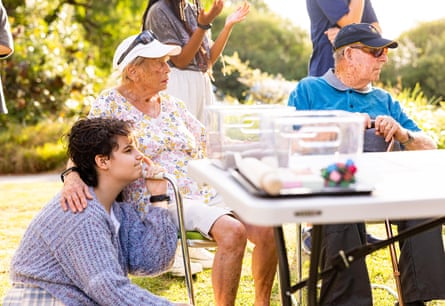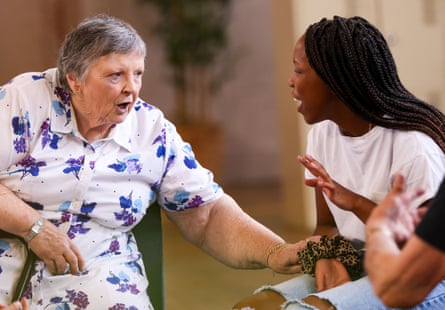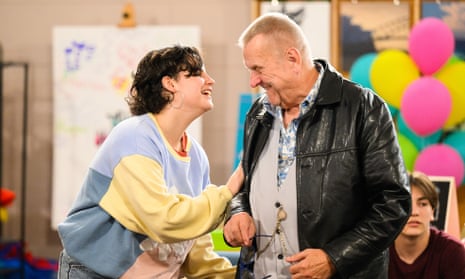In the first season of the ABC’s Old People’s Home for 4 Year Olds – a series imported from the BBC – preschoolers were brought into a retirement home for a heartwarming social experiment aiming to improve the health and wellbeing of older people.
In the second season they switch things up, bringing older people living independently into a purpose-built preschool.
And in season three, in a global first that premieres on Tuesday night, they bring teenagers together with retirees – and there’s much pathos to be found, for both groups.
“To be honest, I feel like I’m in God’s waiting room – just waiting to die,” says one of the older participants. Another, Cecila, found her social circle diminished at retirement. “I feel lonely all the time. I try to cover it when I am outside. I have family, but they are busy … I don’t want to be a burden.”
It’s heartbreaking stuff – but this time around, the teens are hardly the cavalry coming in to rescue them. The younger group are also lonely – and need just as much support.
The pandemic in particular has been hard on teens, leaving many sad, friendless, socially awkward and longing for connection. One of the younger participants admits: “Man, I just really want some friends, regardless of their age.”
Some teen participants are painfully shy and don’t know how to make friends; another has suffered a recent bereavement and is at sea; and one teenager is neurodiverse and feeling isolated.
The elderly in this experiment range from 74 to 93 years old and the teenagers are between 14 and 16 years old. The teens lack confidence in the future, while the older people – some with declining health – lack confidence in the present. Can they alleviate each other’s loneliness? Or is the generational divide too vast?

Predictably, there are gaps around technology, gender norms and slang. When the teens ask the elderly to do a TikTok, confusion reigns. But the real fruit of this experiment – and the best scenes of the first two episodes, which form the basis of this review – come when common ground is found on a deeper level.
Initially, the bonds are fragile. Everyone is just too awkward to click and guards are up. There are excruciating scenes of small talk – or even worse, no talk. But give people time and a task that requires competition or cooperation and old instincts of empathy and connection kick in.
I was initially a little leery of the concept, being slightly cynical of the high level of cuteness in the initial two seasons. But this time round the tone is darker; there is even a death.
It got me thinking about how atomised and individualistic our society is – not just for the elderly but for everyone. Screens may be entertaining, but they’re driving us further from a sense of shared enterprise – and how satisfying is it to experience so many things alone? Somehow, and particularly since the pandemic, we’ve turned into a nation of Eleanor Rigbys, and unless we make a concerted effort to combat loneliness – both in ourselves and others – then we are doomed to keep experiencing it. In many ways the participants in this show are all of us – or what we might become.

The teens and old people on the program are open about their loneliness and there’s great satisfaction in watching connections form. Yes, initially it’s uncomfortable – and some of the games and stunts used by producers a bit hokey – but ultimately, it works. Awkward teens find their equivalent awkward olds, and both blossom in the gentle heat of friendship.
By the end of the first episode, if you are not crying, you have a heart of stone.
Old People’s Home for Teenagers premieres at 8.30pm on 30 August on the ABC and iView

Comments (…)
Sign in or create your Guardian account to join the discussion